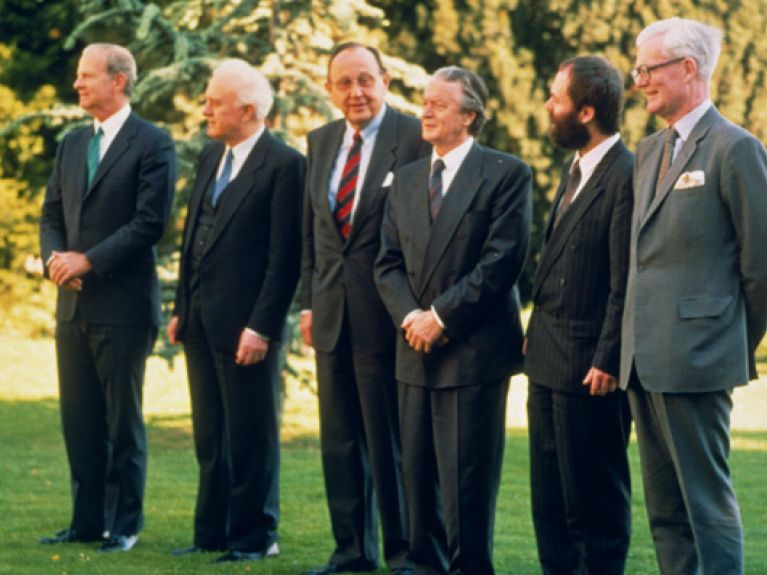Two Plus Four Treaty
On 12 September 1990, the foreign ministers of the Federal Republic of Germany, the GDR, France, Russia, the UK and the USA signed the treaty that sealed the foreign policy aspects of reunification.

Until the very last minute it remained unclear whether the treaty would be adopted. Difficult questions had to be clarified: Should reunified Germany be a member of NATO? What would happen to the Soviet troops still stationed in East Germany? In addition, despite their delight at reunification, Germany’s European neighbours looked with concern at the new large power in their region. Would Germany respect its borders?
Between May and September 1990, the foreign ministers of the Federal Republic of Germany, the GDR, France, Russia, the UK and the USA repeatedly deliberated on these points – and finally reached agreement following long negotiations. On 12 September 1990 in Moscow they signed the Two Plus Four Treaty, which was named after the groups of countries involved. On 1 October 1990, in a joint declaration in New York, the four victorious powers of the Second World War waived their rights with regard to Germany, thereby granting the Federal Republic full sovereignty. On 15 March 1991 the Two Plus Four Treaty entered into force. It was the foreign policy complement to the unification treaty between the Federal Republic and the GDR.
United Germany member of NATO
Among other things, the Two Plus Four Treaty also envisaged that united Germany would belong to NATO. All Soviet troops were to withdraw from East Germany by the end of 1994. From then on, German NATO troops, but no foreign armed forces would be allowed to be stationed on East German territory. The Bundeswehr was reduced in size to 370,000 soldiers. In addition, the Federal Republic renounced atomic, biological and chemical weapons.
Furthermore, Germany acknowledged the inviolability of its existing borders. Poland in particular had called for appropriate pledges. The Oder-Neisse question was resolved in a separate agreement, but did not become part of the Two Plus Four Treaty. Referring to the united Germany, Article 1 states: “Its external borders shall be the borders of the Federal Republic of Germany and the German Democratic Republic and shall be definitive from the date on which the present Treaty comes into force. The confirmation of the definitive nature of the borders of the united Germany is an essential element of the peaceful order in Europe.”
In 2011, UNESCO added the Two Plus Four Treaty to the Memory of the World Register. This worldwide digital network includes selected outstanding documents of contemporary history.
